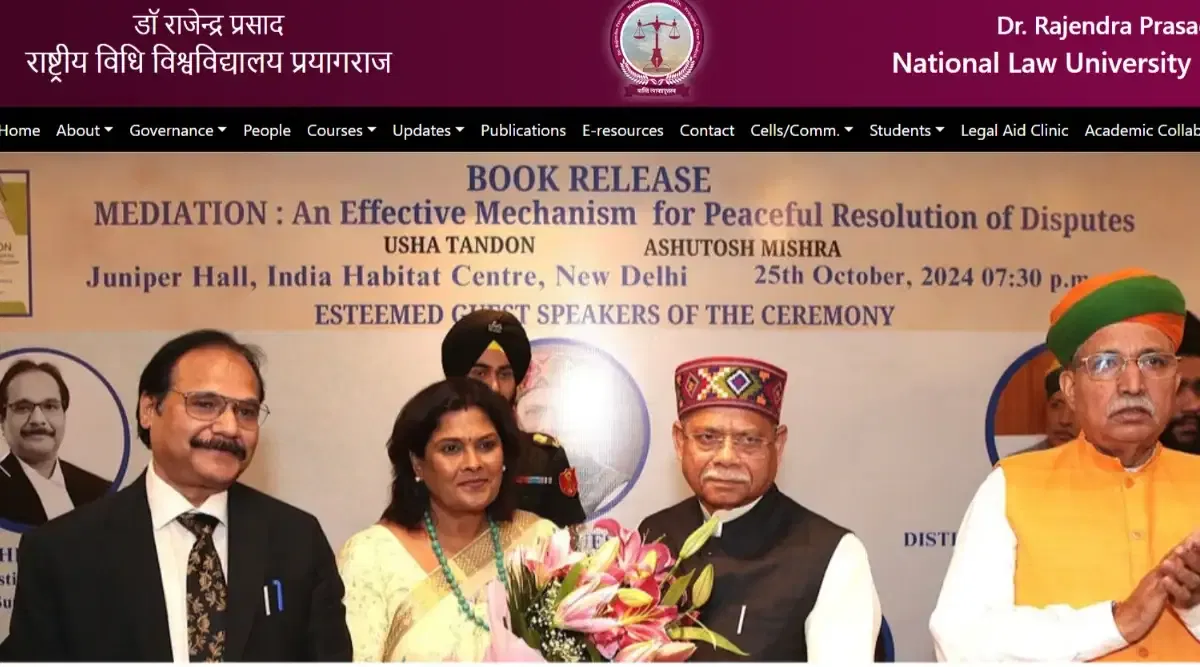To score 100+ in the CLAT exam, candidates need to be strong in all areas, especially English and General Knowledge, which usually carries the most weightage and is easier to score.
Table of Contents
Candidates curious to know how to score 100+ in CLAT? We got you covered, tips for scoring 100+ in CLAT include three practice papers a week and their thorough analysis, focusing most on reading-intensive and long sections in the paper. Along with this, candidates need to be strong in all areas, especially English and General Knowledge.
A 100+ CLAT score usually assures law students' admission to prestigious National Law Universities (NLUs). Candidates who want to score 100+ in the CLAT 2026 must have a well-organised preparation plan because the competition will get harder every year. Strong conceptual comprehension, time management, practice, and attention to the test's format and curriculum are all necessary to achieve this score.
Candidates must ensure that the preparation is robust enough, as the exam score is reflected in percentiles. The duration of CLAT is two hours and includes 150 multiple-choice questions (MCQs), and because of the negative marking system, answering questions carefully is essential.
Right Scoring Strategy for CLAT to Score 100+?
It takes strategy, commitment, and regular practice to score 100+ in CLAT. Candidates can significantly increase their chances of achieving a 100+ CLAT score by understanding the CLAT syllabus 2026, following the proper preparation plan, managing their time well, and concentrating on important topics.
The paper for CLAT UG course admissions will consist of 120 passage-based multiple-choice questions, which will last 2 hours. The total score will be 120 marks.
Candidates can view the section-wise question weighting for each section as follows, based on the CLAT sectional weighting:
| Sections | MCQs per Section | Maximum Marks | Approximate Weightage (%) |
| English Language | 28-32 | 28-32 | 18.66 - 21.33 |
| Current Affairs including General Knowledge | 35-39 | 35-39 | 23.33 - 26 |
| Logical Reasoning | 28-32 | 28-32 | 18.66 - 21.33 |
| Legal Reasoning | 35-39 | 35-39 | 23.33 - 26 |
| Quantitative Techniques (Elementary Mathematics up to Class 10) | 13-17 | 13-17 | 8.66 - 11.33 |
| Total | 120 | 120 | 100% |
Also Read: CLAT Important Topics Weightage
Subject-Wise Preparation Tips to Score 100+ in CLAT
The Common Law Admission Test (CLAT) is one of the most competitive law entrance tests in India. More than 60,000 applicants apply annually for admission to one of the 25 esteemed National Law Universities (NLUs) in the nation.
The subject-wise preparation tips to score 100 + in CLAT are added below extensively for candidates' understanding:
How to Prepare for CLAT English?
Covering the English Language syllabus of CLAT can be made easier by reading newspapers, digital essays, and other excellent research available online; a few tips are added below:
- Candidates need to learn the fundamentals of grammar, which you can do even by reading grammar books written for school.
- Word Power Made Easy and Total English are excellent resource books for improving vocabulary and grammar.
- To get better at the language, read more. To expand your vocabulary, read novels, periodicals, books, and newspapers.
- Use sites such as 3 Quarks and Aeon Essay daily. Reading their articles and essays, which are written in sophisticated and proficient English, can improve your reading speed.
Also Check: Idioms and Proverbs for CLAT With Meanings and Examples
How to Prepare for the CLAT Quantitative Section?
The majority of CLAT applicants have conflicting opinions about the Quantitative Reasoning section. They either dread it more than everyone else or are incredibly at ease with it.
- It is imperative to give one's best effort in every section of the CLAT; nevertheless, create a study plan using quantitative techniques for CLAT.
- The first step in preparing for this part is to become proficient. Regular practice with DI sets and math problems will help you advance in your pre
Also Check: Quantitative Techniques for CLAT
How to Prepare for CLAT Legal Reasoning Section?
The paper's longest and most reading-intensive section is Legal Reasoning. Therefore, the length of the text may occasionally increase the amount of time an applicant needs to finish it.
- First and foremost, you need to become acquainted with the legal principles that are frequently assessed in the paper as well as the vocabulary employed in the CLAT exam passages.
Also Check: Criminal Law Questions for CLAT with Answers
How to Prepare for the CLAT Logical Reasoning Section?
By reviewing the different concepts and assessing a thorough comprehension of the CLAT Logical Reasoning section, one can prepare for logical reasoning by fully understanding the syllabus and building a solid understanding of concepts such as assumptions, conclusions, statement-based questions, strengthening and weakening questions, etc.
- Do not cram dates or events; instead, understand why something happened and the reasons behind these matters.
- Prepare your notes that include important formulas and concepts.
Also Check: How to Improve Logical Reasoning for CLAT?
How to Prepare for CLAT General Knowledge and Current Affairs?
One of the best CLAT GK preparation tips is making a habit of reading the newspaper daily.
- The Hindu and The Indian Express are great sources.
- A monthly GK magazine could be a holistic guide covering the important events of the month.
- With the correct tactics and commitment, scoring in CLAT is a difficult but attainable objective. It's critical to approach the test methodically and balance your preparation.
Recommended: Important Topics to Study from CLAT Syllabus
Most Important Part of CLAT Preparation?
Keep in mind that reviewing the practice tests is the most important aspect of your CLAT preparation. It's crucial to thoroughly evaluate your performance, even if you take three practice tests per week.
- If you don't do a thorough analysis, you risk making many of your blunders, or worse, you might start employing the incorrect techniques regularly.
- Analysis is always beneficial, so spend a minimum of one and a half hours analysing your mocks. Examine your errors and fix them; there will only be a noticeable improvement.
- Using mock exams, you can assess your degree of preparation. It is recommended that you complete at least one or two CLAT mock tests each week to determine your performance levels.
CLAT Exam Pattern: Marking Scheme
The Consortium has verified the marking structure for the UG courses, and the CLAT exam pattern 2026 has not altered. The score system operates as follows:
Applicants will earn one mark for each right response. 0.25 points will reduce the final score for each wrong response. Unattempted questions do not result in a mark deduction or award.
| CLAT Marking Parameters | Marks |
| Correct Answer | +1 mark |
| Incorrect Answer | -0.25 marks |
| Un-attempted Question | 0 marks |
Also Check: Do's and Don'ts for CLAT: Exam Tips









































POST YOUR COMMENT